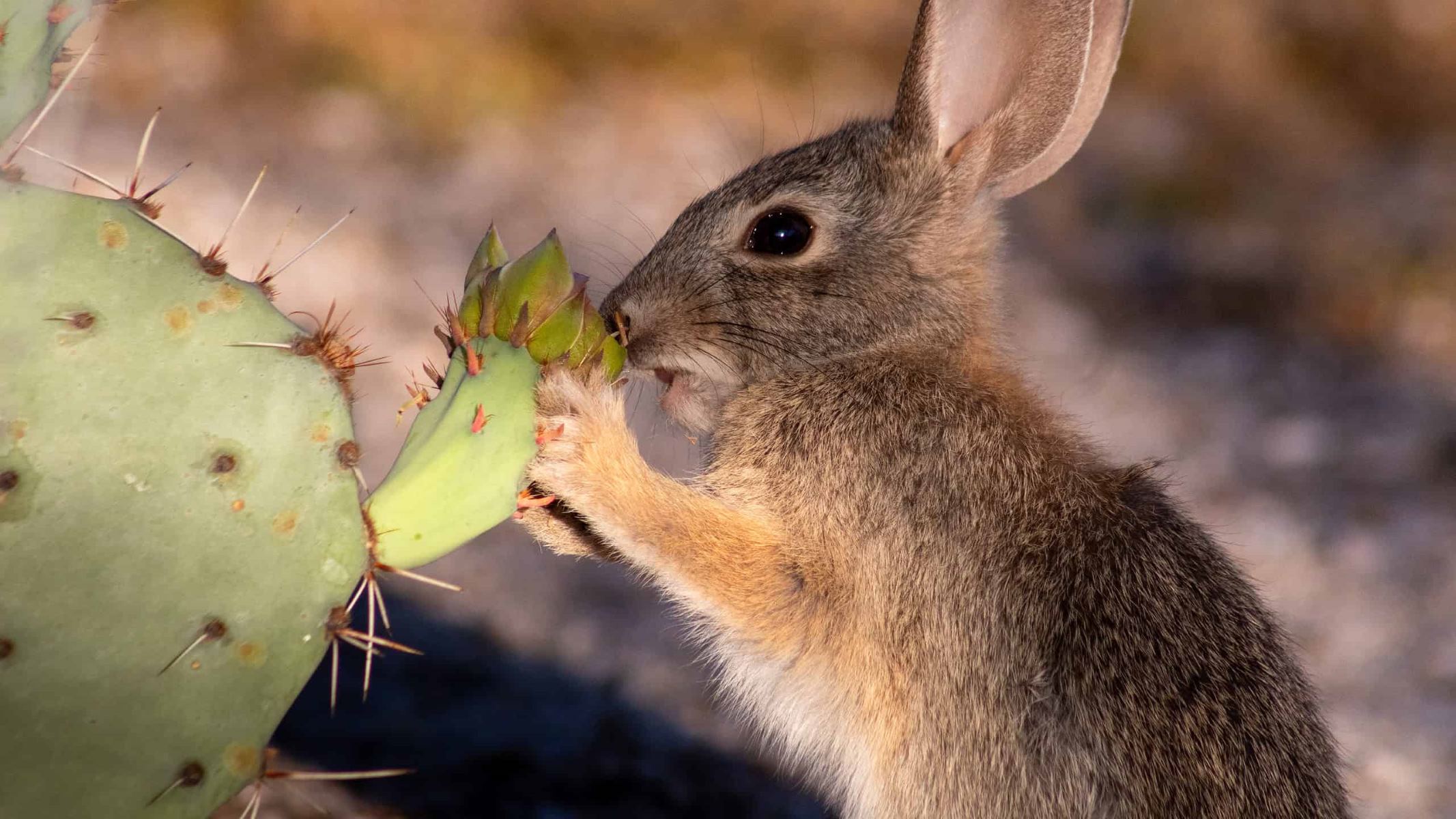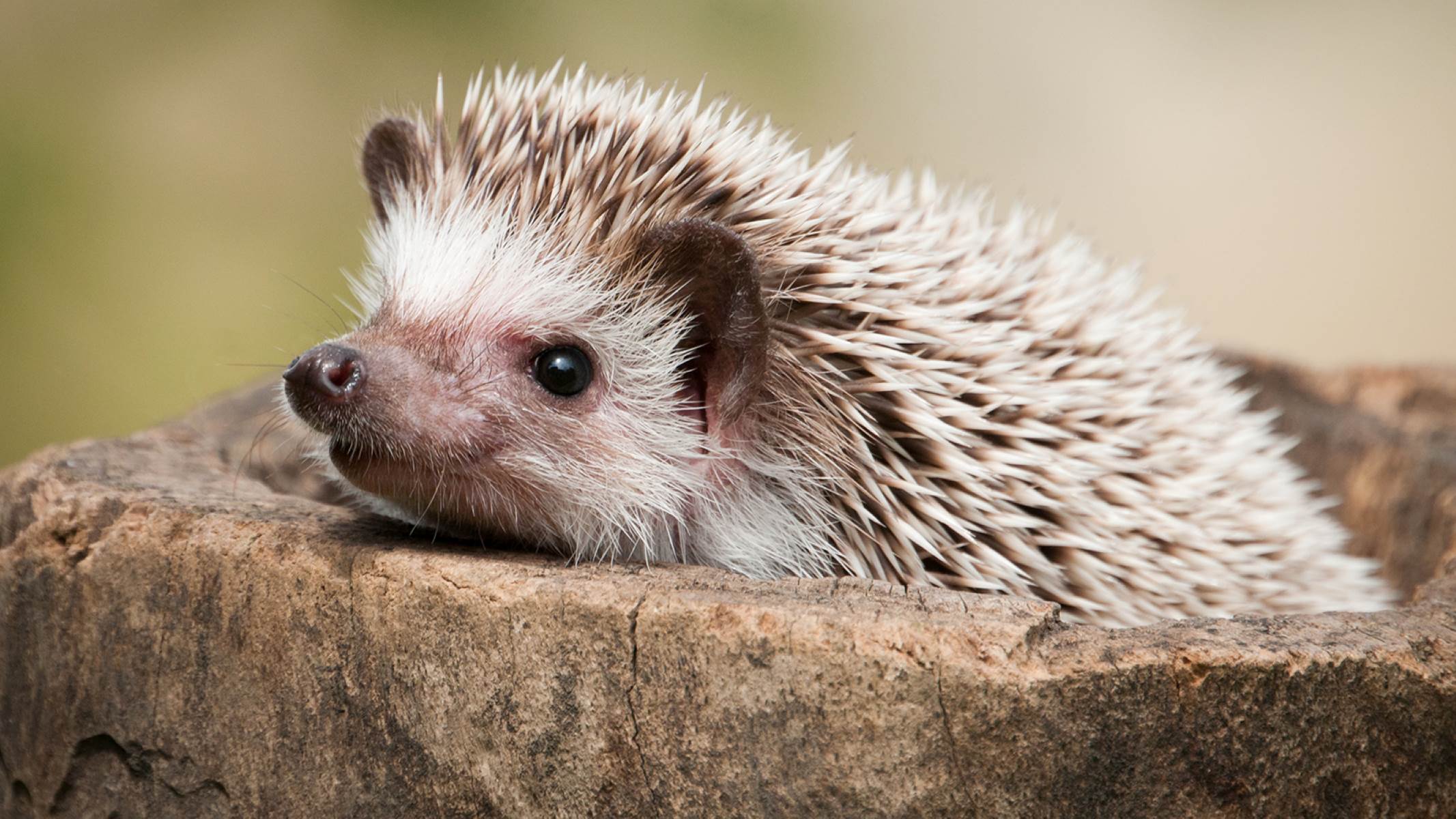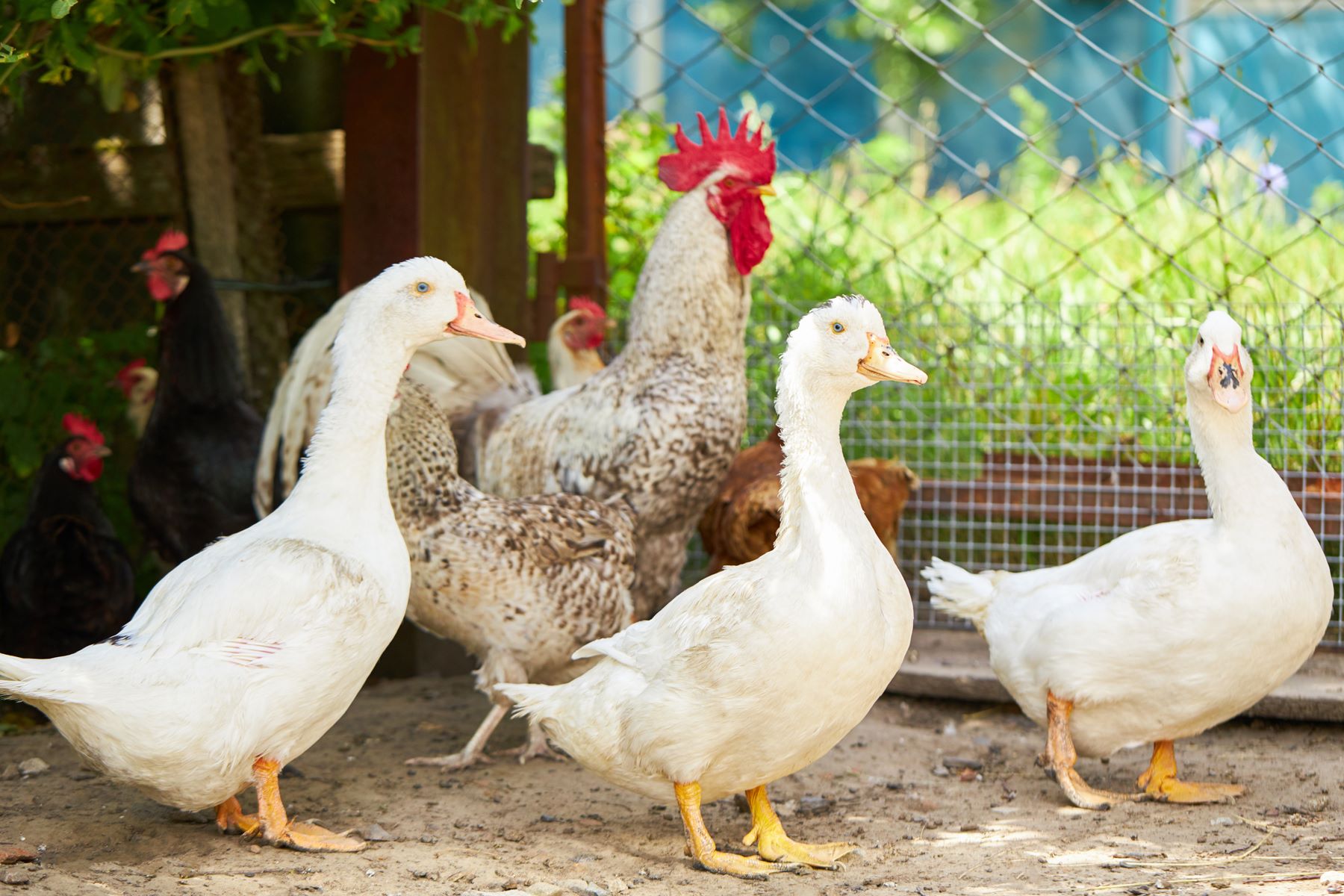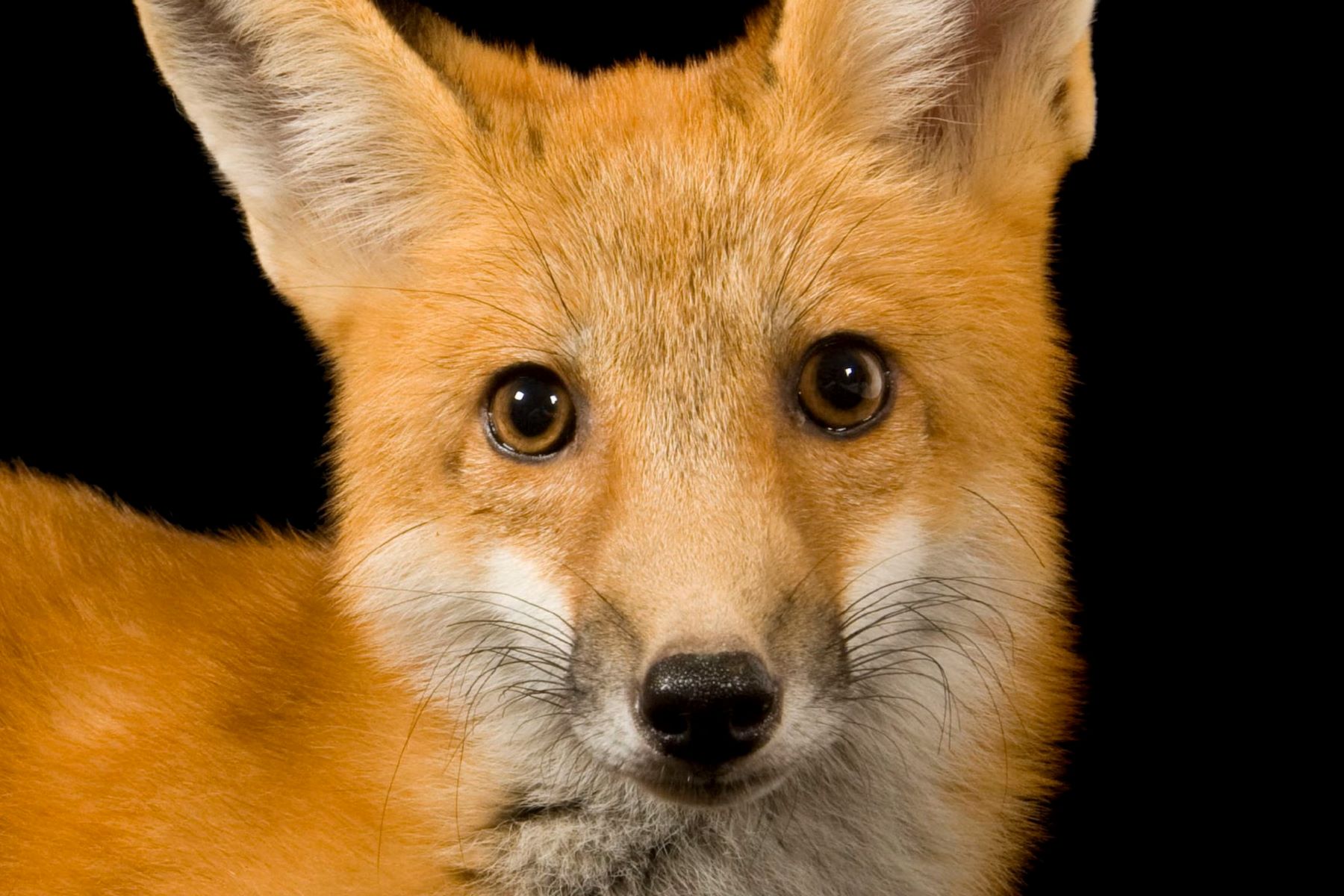

Science
10 Surprising Animals That Feast On Cacti
Published: February 6, 2024
Discover the fascinating world of science as these 10 surprising animals feast on cacti. Explore the unique relationships between animals and their prickly prey.
(Many of the links in this article redirect to a specific reviewed product. Your purchase of these products through affiliate links helps to generate commission for Regretless.com, at no extra cost. Learn more)
Table of Contents
Introduction
The desert, with its scorching sun and arid landscapes, may seem like an inhospitable place for life to thrive. However, hidden within this seemingly barren environment, a fascinating array of creatures has adapted to not only survive but also thrive in these harsh conditions. One of the most remarkable aspects of desert life is the ability of certain animals to feast on cacti, a plant known for its formidable spines and water-storing capabilities. In this article, we will delve into the intriguing world of these resilient creatures and explore 10 surprising animals that have mastered the art of dining on cacti.
From the iconic Galapagos tortoise to the resourceful pack rats, these animals have developed remarkable strategies to consume cacti, showcasing the incredible adaptability of nature. As we embark on this exploration, we will uncover the unique physiological and behavioral adaptations that enable these creatures to thrive in environments where water and food are scarce. Additionally, we will gain insights into the intricate ecological relationships between these animals and the resilient cacti they depend on for sustenance.
Join us as we venture into the captivating realm of desert ecosystems, where survival hinges on the ability to extract nourishment from one of the most unlikely sources – the cactus. Through this exploration, we will gain a deeper appreciation for the resilience and ingenuity of these remarkable animals and the intricate web of life that sustains them in some of the harshest environments on Earth.
Galapagos Tortoise
The Galapagos tortoise, a majestic giant of the reptile world, is renowned for its impressive size and longevity. These remarkable creatures, endemic to the Galapagos Islands, have adapted to thrive in arid and semi-arid environments, including areas where cacti are a prominent source of sustenance. Despite their herbivorous diet, which primarily consists of grasses, leaves, and fruits, Galapagos tortoises have developed a fascinating ability to consume cacti, demonstrating their remarkable adaptability to the challenging conditions of their habitat.
One of the most intriguing aspects of the Galapagos tortoise's feeding behavior is its utilization of its powerful beak-like mouth to grasp the spiny pads and fruits of cacti. While the sharp spines of the cactus may deter many animals, the Galapagos tortoise's thick, tough skin and specialized mouth allow it to navigate through the formidable defenses of these plants with remarkable ease. This adaptation enables the tortoise to access the water-rich tissues within the cactus, providing a vital source of hydration in the arid landscapes of the Galapagos Islands.
Furthermore, the Galapagos tortoise's ability to efficiently metabolize the water and nutrients obtained from cacti underscores its remarkable physiological adaptations. These adaptations not only enable the tortoise to thrive in environments where water sources are scarce but also highlight the intricate evolutionary processes that have shaped the unique characteristics of this iconic species.
In addition to their pivotal role as consumers of cacti, Galapagos tortoises play a crucial ecological role in shaping their habitat. As they feed on cacti and other vegetation, they contribute to seed dispersal, aiding in the regeneration of plant populations and influencing the dynamics of the island ecosystems. This interconnected relationship between the Galapagos tortoise and the cacti exemplifies the intricate web of interactions that sustains life in these remote and challenging environments.
The Galapagos tortoise's ability to feast on cacti serves as a testament to the remarkable adaptability and resilience of these iconic reptiles. Through their unique feeding behaviors and physiological adaptations, these tortoises have become integral components of the delicate balance that characterizes the Galapagos Islands' ecosystems. As we continue our exploration of animals that feast on cacti, the Galapagos tortoise stands as a testament to the extraordinary ways in which nature has sculpted life to thrive in the most unexpected of places.
Pack Rats
Amidst the rugged terrain of deserts and arid regions, the unassuming pack rat, also known as a woodrat, emerges as a master of survival, displaying remarkable adaptations that enable it to thrive in these challenging environments. While the pack rat's diet primarily consists of seeds, fruits, and vegetation, it has also developed a surprising penchant for consuming cacti, showcasing its resourcefulness in extracting sustenance from the spiny inhabitants of the desert.
One of the most intriguing aspects of the pack rat's dietary habits is its ability to consume cacti without succumbing to the formidable spines that deter many other animals. This feat is made possible by the pack rat's dexterous manipulation of the cactus pads, allowing it to access the water and nourishment contained within. Moreover, the pack rat's specialized digestive system enables it to process the water-dense tissues of cacti, providing a vital source of hydration in the parched desert landscapes.
In addition to its remarkable dietary adaptations, the pack rat plays a significant ecological role in desert ecosystems. As it consumes cacti and other vegetation, the pack rat contributes to seed dispersal, facilitating the regeneration of plant populations and influencing the dynamics of the desert flora. Furthermore, the pack rat's foraging activities and the resulting accumulation of plant materials contribute to the formation of expansive nests, known as middens, which serve as vital shelters for a diverse array of desert-dwelling organisms.
The intricate relationship between the pack rat and cacti exemplifies the remarkable interplay between species in desert environments, where survival hinges on the ability to extract sustenance from the most unlikely sources. Through its resourcefulness and adaptability, the pack rat has carved out a niche in the challenging domain of the desert, underscoring the resilience and ingenuity of desert-dwelling creatures.
As we marvel at the pack rat's ability to thrive in the face of adversity, we gain a deeper appreciation for the intricate web of life that sustains these resilient animals in some of the harshest environments on Earth. The pack rat's remarkable adaptations and its surprising affinity for cacti serve as a testament to the tenacity and adaptability of life in the desert, where every creature plays a vital role in the intricate tapestry of survival and coexistence.
Desert Tortoise
The desert tortoise, a symbol of resilience in the harsh landscapes of arid regions, embodies the essence of survival in the face of adversity. Endemic to the deserts of the southwestern United States, these remarkable reptiles have evolved a suite of adaptations that enable them to thrive in environments where water and food are scarce. While the desert tortoise is primarily herbivorous, feeding on a variety of desert plants, it has also developed a surprising ability to consume cacti, showcasing its remarkable adaptability to the challenges of desert life.
One of the most intriguing aspects of the desert tortoise's dietary habits is its consumption of cacti, despite the formidable spines that protect these plants. The tortoise's specialized feeding behaviors allow it to navigate through the spiny pads of cacti, accessing the water and nutrients contained within. This remarkable feat is made possible by the tortoise's thick, tough skin and its ability to skillfully manipulate the spiny vegetation, demonstrating a remarkable level of dexterity and adaptability.
In addition to its ability to consume cacti, the desert tortoise plays a crucial ecological role in shaping desert ecosystems. As it forages on a variety of desert plants, including cacti, the tortoise contributes to seed dispersal, aiding in the regeneration of plant populations and influencing the dynamics of the desert flora. Furthermore, the burrows created by desert tortoises provide vital shelters for a diverse array of desert-dwelling organisms, highlighting the far-reaching impact of these iconic reptiles on their environment.
The intricate relationship between the desert tortoise and cacti underscores the remarkable adaptability of these resilient creatures in the face of the challenges posed by desert life. Through their unique feeding behaviors and ecological contributions, desert tortoises have become integral components of the delicate balance that characterizes desert ecosystems, showcasing the intricate web of interactions that sustains life in these arid environments.
As we marvel at the desert tortoise's ability to thrive in the face of adversity, we gain a deeper appreciation for the resilience and ingenuity of desert-dwelling creatures. The desert tortoise's remarkable adaptations and its surprising affinity for cacti serve as a testament to the tenacity and adaptability of life in the desert, where every creature plays a vital role in the intricate tapestry of survival and coexistence.
Mule Deer
Mule deer, renowned for their graceful agility and striking antlers, are iconic inhabitants of the western United States and other regions characterized by arid landscapes. These resilient herbivores have adapted to thrive in environments where water and food sources are often scarce, showcasing remarkable behavioral and physiological adaptations that enable them to navigate the challenges of desert life. While mule deer primarily feed on a diverse array of plants, including shrubs, grasses, and forbs, they have also developed a surprising ability to consume cacti, highlighting their resourcefulness in extracting sustenance from the arid terrain.
One of the most intriguing aspects of the mule deer's dietary habits is its consumption of cacti, despite the formidable spines that protect these plants. Mule deer exhibit a remarkable level of dexterity and precision as they navigate through the spiny pads of cacti, accessing the water and nutrients contained within. This feat is made possible by the deer's specialized dental and digestive adaptations, which allow them to efficiently process the fibrous and water-dense tissues of cacti, providing a vital source of hydration and nourishment in the parched desert landscapes.
Furthermore, the mule deer's ability to consume cacti underscores its pivotal role in shaping desert ecosystems. As they forage on a variety of plants, including cacti, mule deer contribute to seed dispersal, aiding in the regeneration of plant populations and influencing the dynamics of the desert flora. Additionally, their foraging activities play a crucial role in shaping the structure and composition of plant communities, further illustrating the far-reaching impact of these resilient herbivores on their environment.
The intricate relationship between mule deer and cacti serves as a testament to the adaptability and resourcefulness of these iconic creatures in the face of the challenges posed by desert life. Through their unique feeding behaviors and ecological contributions, mule deer have become integral components of the delicate balance that characterizes desert ecosystems, showcasing the intricate web of interactions that sustains life in these arid environments.
As we marvel at the mule deer's ability to thrive in the face of adversity, we gain a deeper appreciation for the resilience and ingenuity of desert-dwelling creatures. The mule deer's remarkable adaptations and its surprising affinity for cacti serve as a testament to the tenacity and adaptability of life in the desert, where every creature plays a vital role in the intricate tapestry of survival and coexistence.
Kangaroo Rat
The kangaroo rat, a captivating denizen of the desert, stands as a testament to the remarkable adaptability and resilience of desert-dwelling creatures. Endowed with remarkable agility and a distinctive bipedal locomotion reminiscent of its namesake, the kangaroo rat has carved out a niche in the arid landscapes of North America, showcasing a suite of adaptations that enable it to thrive in environments where water and food are scarce.
Despite the harsh and unforgiving nature of their habitat, kangaroo rats have demonstrated a remarkable ability to consume cacti, a feat that underscores their resourcefulness and adaptability in the face of the challenges posed by desert life. While their diet primarily consists of seeds, vegetation, and the occasional insects, kangaroo rats have been observed to consume the fleshy parts of cacti, showcasing their ability to extract sustenance from the water-storing plants that dot the desert terrain.
One of the most intriguing aspects of the kangaroo rat's dietary habits is its ability to navigate through the spiny defenses of cacti, accessing the vital moisture and nutrients contained within. This feat is made possible by the kangaroo rat's remarkable agility and dexterity, allowing it to skillfully manipulate the spiny vegetation and extract the nourishment it requires to thrive in the arid environment. Furthermore, the kangaroo rat's specialized kidney function enables it to efficiently conserve water, a vital adaptation for survival in the water-scarce desert landscapes.
In addition to their remarkable dietary adaptations, kangaroo rats play a significant ecological role in desert ecosystems. As they consume cacti and other vegetation, they contribute to seed dispersal, aiding in the regeneration of plant populations and influencing the dynamics of the desert flora. Furthermore, their burrowing activities play a crucial role in shaping the structure of the desert soil, influencing water retention and facilitating the growth of vegetation in these challenging environments.
The intricate relationship between the kangaroo rat and cacti serves as a testament to the adaptability and resourcefulness of these iconic creatures in the face of the challenges posed by desert life. Through their unique feeding behaviors and ecological contributions, kangaroo rats have become integral components of the delicate balance that characterizes desert ecosystems, showcasing the intricate web of interactions that sustains life in these arid environments.
As we marvel at the kangaroo rat's ability to thrive in the face of adversity, we gain a deeper appreciation for the resilience and ingenuity of desert-dwelling creatures. The kangaroo rat's remarkable adaptations and its surprising affinity for cacti serve as a testament to the tenacity and adaptability of life in the desert, where every creature plays a vital role in the intricate tapestry of survival and coexistence.
Desert Bighorn Sheep
The desert bighorn sheep, an iconic symbol of rugged resilience in the arid landscapes of the American West, embodies the essence of adaptability and survival in the face of adversity. These majestic herbivores have evolved a remarkable suite of adaptations that enable them to thrive in environments where water and food sources are scarce, showcasing their remarkable ability to navigate the challenges of desert life.
While the desert bighorn sheep primarily feed on a diverse array of desert plants, including shrubs, grasses, and forbs, they have also developed a surprising ability to consume cacti, highlighting their resourcefulness in extracting sustenance from the harsh terrain. Despite the formidable spines that protect these water-storing plants, desert bighorn sheep exhibit a remarkable level of agility and precision as they navigate through the spiny pads, accessing the vital moisture and nutrients contained within. This feat is made possible by their specialized dental and digestive adaptations, which allow them to efficiently process the fibrous and water-dense tissues of cacti, providing a vital source of hydration and nourishment in the parched desert landscapes.
In addition to their remarkable dietary adaptations, desert bighorn sheep play a crucial ecological role in shaping desert ecosystems. As they forage on a variety of plants, including cacti, they contribute to seed dispersal, aiding in the regeneration of plant populations and influencing the dynamics of the desert flora. Furthermore, their foraging activities play a significant role in shaping the structure and composition of plant communities, further illustrating the far-reaching impact of these resilient herbivores on their environment.
The intricate relationship between desert bighorn sheep and cacti serves as a testament to the adaptability and resourcefulness of these iconic creatures in the face of the challenges posed by desert life. Through their unique feeding behaviors and ecological contributions, desert bighorn sheep have become integral components of the delicate balance that characterizes desert ecosystems, showcasing the intricate web of interactions that sustains life in these arid environments.
As we marvel at the desert bighorn sheep's ability to thrive in the face of adversity, we gain a deeper appreciation for the resilience and ingenuity of desert-dwelling creatures. The desert bighorn sheep's remarkable adaptations and its surprising affinity for cacti serve as a testament to the tenacity and adaptability of life in the desert, where every creature plays a vital role in the intricate tapestry of survival and coexistence.
Cactus Wren
The cactus wren, a charismatic avian inhabitant of the desert, embodies the essence of resilience and adaptability in the harsh landscapes of arid regions. With its striking appearance and distinctive vocalizations, the cactus wren has carved out a niche in the challenging domain of the desert, showcasing a suite of remarkable adaptations that enable it to thrive in environments where water and food are scarce.
As its name suggests, the cactus wren has developed a remarkable affinity for cacti, utilizing these iconic desert plants as a vital resource in its quest for survival. Despite the formidable spines that protect cacti, the cactus wren exhibits remarkable agility and dexterity as it navigates through the spiny branches, foraging for insects, spiders, and other small arthropods that seek refuge within the cactus's succulent pads. This unique foraging behavior not only highlights the wren's adaptability but also underscores its pivotal role in the intricate web of interactions that characterizes desert ecosystems.
The cactus wren's reliance on cacti extends beyond foraging; these resourceful birds also utilize the cactus as a nesting site, demonstrating their remarkable integration with the desert environment. The wrens construct intricate nests within the protective embrace of cactus plants, utilizing the spiny branches to deter potential predators and shield their offspring from the harsh desert elements. This nesting strategy not only showcases the wren's ingenuity but also highlights the intricate ecological relationships between the cactus wren and its formidable botanical counterparts.
Furthermore, the cactus wren's vocal prowess adds to its allure, with its melodious calls resonating through the desert landscape. These distinctive vocalizations serve as a testament to the wren's adaptability to the unique acoustic properties of the desert environment, where sound transmission and reception pose distinct challenges. The wren's ability to navigate these acoustic hurdles underscores its remarkable sensory adaptations, further enhancing its status as a master of survival in the arid terrain.
In addition to their foraging and nesting behaviors, cactus wrens play a crucial ecological role in shaping desert ecosystems. As they forage among the cacti and other vegetation, they contribute to seed dispersal, aiding in the regeneration of plant populations and influencing the dynamics of the desert flora. Furthermore, their foraging activities support the control of insect populations, contributing to the delicate balance of the desert ecosystem.
The intricate relationship between the cactus wren and cacti serves as a testament to the adaptability and resourcefulness of these iconic desert-dwelling birds in the face of the challenges posed by desert life. Through their unique behaviors and ecological contributions, cactus wrens have become integral components of the delicate balance that characterizes desert ecosystems, showcasing the intricate web of interactions that sustains life in these arid environments.
As we marvel at the cactus wren's ability to thrive in the face of adversity, we gain a deeper appreciation for the resilience and ingenuity of desert-dwelling creatures. The cactus wren's remarkable adaptations and its surprising affinity for cacti serve as a testament to the tenacity and adaptability of life in the desert, where every creature plays a vital role in the intricate tapestry of survival and coexistence.
Javelina
The javelina, also known as the collared peccary, emerges as a resilient and resourceful inhabitant of the desert, embodying the essence of adaptability in the face of arid challenges. These distinctive mammals, native to the southwestern United States and Central and South America, have carved out a niche in the harsh landscapes of the desert, showcasing a suite of remarkable adaptations that enable them to thrive in environments where water and food are scarce.
Despite the formidable spines that protect cacti, javelinas have demonstrated a remarkable ability to consume these water-storing plants, highlighting their resourcefulness in extracting sustenance from the arid terrain. Their specialized dental and digestive adaptations enable them to efficiently process the fibrous and water-dense tissues of cacti, providing a vital source of hydration and nourishment in the parched desert landscapes.
In addition to their dietary adaptations, javelinas play a significant ecological role in shaping desert ecosystems. As they forage on a variety of plants, including cacti, javelinas contribute to seed dispersal, aiding in the regeneration of plant populations and influencing the dynamics of the desert flora. Furthermore, their foraging activities play a crucial role in shaping the structure and composition of plant communities, further illustrating the far-reaching impact of these resilient mammals on their environment.
The intricate relationship between javelinas and cacti serves as a testament to the adaptability and resourcefulness of these iconic creatures in the face of the challenges posed by desert life. Through their unique feeding behaviors and ecological contributions, javelinas have become integral components of the delicate balance that characterizes desert ecosystems, showcasing the intricate web of interactions that sustains life in these arid environments.
As we marvel at the javelina's ability to thrive in the face of adversity, we gain a deeper appreciation for the resilience and ingenuity of desert-dwelling creatures. The javelina's remarkable adaptations and its surprising affinity for cacti serve as a testament to the tenacity and adaptability of life in the desert, where every creature plays a vital role in the intricate tapestry of survival and coexistence.
Agouti
The agouti, a fascinating inhabitant of the tropical and subtropical regions of the Americas, stands as a testament to the remarkable adaptability and resourcefulness of wildlife in diverse ecosystems. With its sleek, agile build and distinctive fur, the agouti has carved out a niche in the lush landscapes of its habitat, showcasing a suite of remarkable adaptations that enable it to thrive in environments rich in biodiversity.
While the agouti's diet primarily consists of a diverse array of fruits, seeds, and vegetation, it has also demonstrated a surprising ability to consume cacti, highlighting its resourcefulness in extracting sustenance from a variety of food sources. Despite the formidable spines that protect cacti, agoutis exhibit remarkable agility and precision as they navigate through the spiny vegetation, accessing the vital moisture and nutrients contained within. This feat is made possible by their specialized dental and digestive adaptations, which allow them to efficiently process the fibrous and water-dense tissues of cacti, providing a vital source of hydration and nourishment in the tropical and subtropical landscapes.
In addition to their dietary adaptations, agoutis play a significant ecological role in shaping the dynamics of their habitat. As they forage on a variety of plants, including cacti, agoutis contribute to seed dispersal, aiding in the regeneration of plant populations and influencing the diversity of the tropical and subtropical flora. Furthermore, their foraging activities support the control of vegetation, contributing to the delicate balance of the ecosystem.
The intricate relationship between agoutis and cacti serves as a testament to the adaptability and resourcefulness of these iconic creatures in the face of the challenges posed by diverse ecosystems. Through their unique feeding behaviors and ecological contributions, agoutis have become integral components of the delicate balance that characterizes the tropical and subtropical landscapes, showcasing the intricate web of interactions that sustains life in these diverse environments.
As we marvel at the agouti's ability to thrive in the face of the challenges posed by its habitat, we gain a deeper appreciation for the resilience and ingenuity of wildlife in diverse ecosystems. The agouti's remarkable adaptations and its surprising affinity for cacti serve as a testament to the tenacity and adaptability of life in these regions, where every creature plays a vital role in the intricate tapestry of survival and coexistence.
Gila Woodpecker
The Gila woodpecker, a captivating avian species native to the arid and semi-arid regions of the southwestern United States and Mexico, stands as a testament to the remarkable adaptability and resilience of desert-dwelling creatures. With its distinctive black and white plumage and vibrant red crown, the Gila woodpecker has carved out a niche in the challenging domain of the desert, showcasing a suite of remarkable adaptations that enable it to thrive in environments where water and food are often scarce.
Despite the harsh and unforgiving nature of their habitat, Gila woodpeckers have demonstrated a remarkable ability to consume cacti, a feat that underscores their resourcefulness and adaptability in the face of the challenges posed by desert life. While their diet primarily consists of insects, fruits, and seeds, Gila woodpeckers have been observed to consume the fleshy parts of cacti, showcasing their ability to extract sustenance from the water-storing plants that dot the desert terrain.
One of the most intriguing aspects of the Gila woodpecker's dietary habits is its ability to navigate through the spiny defenses of cacti, accessing the vital moisture and nutrients contained within. This feat is made possible by the woodpecker's remarkable agility and dexterity, allowing it to skillfully extract the nourishment it requires to thrive in the arid environment. Furthermore, the Gila woodpecker's specialized beak and tongue adaptations enable it to access the inner flesh of cacti, highlighting the intricate evolutionary processes that have shaped its feeding behaviors.
In addition to their remarkable dietary adaptations, Gila woodpeckers play a significant ecological role in shaping desert ecosystems. As they forage among the cacti and other vegetation, they contribute to seed dispersal, aiding in the regeneration of plant populations and influencing the dynamics of the desert flora. Furthermore, their foraging activities support the control of insect populations, contributing to the delicate balance of the desert ecosystem.
The intricate relationship between Gila woodpeckers and cacti serves as a testament to the adaptability and resourcefulness of these iconic desert-dwelling birds in the face of the challenges posed by desert life. Through their unique behaviors and ecological contributions, Gila woodpeckers have become integral components of the delicate balance that characterizes desert ecosystems, showcasing the intricate web of interactions that sustains life in these arid environments.
As we marvel at the Gila woodpecker's ability to thrive in the face of adversity, we gain a deeper appreciation for the resilience and ingenuity of desert-dwelling creatures. The Gila woodpecker's remarkable adaptations and its surprising affinity for cacti serve as a testament to the tenacity and adaptability of life in the desert, where every creature plays a vital role in the intricate tapestry of survival and coexistence.













